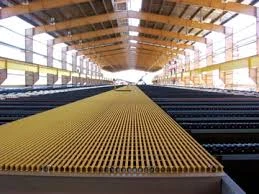
-
 Afrikaans
Afrikaans -
 Albanian
Albanian -
 Amharic
Amharic -
 Arabic
Arabic -
 Armenian
Armenian -
 Azerbaijani
Azerbaijani -
 Basque
Basque -
 Belarusian
Belarusian -
 Bengali
Bengali -
 Bosnian
Bosnian -
 Bulgarian
Bulgarian -
 Catalan
Catalan -
 Cebuano
Cebuano -
 China
China -
 China (Taiwan)
China (Taiwan) -
 Corsican
Corsican -
 Croatian
Croatian -
 Czech
Czech -
 Danish
Danish -
 Dutch
Dutch -
 English
English -
 Esperanto
Esperanto -
 Estonian
Estonian -
 Finnish
Finnish -
 French
French -
 Frisian
Frisian -
 Galician
Galician -
 Georgian
Georgian -
 German
German -
 Greek
Greek -
 Gujarati
Gujarati -
 Haitian Creole
Haitian Creole -
 hausa
hausa -
 hawaiian
hawaiian -
 Hebrew
Hebrew -
 Hindi
Hindi -
 Miao
Miao -
 Hungarian
Hungarian -
 Icelandic
Icelandic -
 igbo
igbo -
 Indonesian
Indonesian -
 irish
irish -
 Italian
Italian -
 Japanese
Japanese -
 Javanese
Javanese -
 Kannada
Kannada -
 kazakh
kazakh -
 Khmer
Khmer -
 Rwandese
Rwandese -
 Korean
Korean -
 Kurdish
Kurdish -
 Kyrgyz
Kyrgyz -
 Lao
Lao -
 Latin
Latin -
 Latvian
Latvian -
 Lithuanian
Lithuanian -
 Luxembourgish
Luxembourgish -
 Macedonian
Macedonian -
 Malgashi
Malgashi -
 Malay
Malay -
 Malayalam
Malayalam -
 Maltese
Maltese -
 Maori
Maori -
 Marathi
Marathi -
 Mongolian
Mongolian -
 Myanmar
Myanmar -
 Nepali
Nepali -
 Norwegian
Norwegian -
 Norwegian
Norwegian -
 Occitan
Occitan -
 Pashto
Pashto -
 Persian
Persian -
 Polish
Polish -
 Portuguese
Portuguese -
 Punjabi
Punjabi -
 Romanian
Romanian -
 Russian
Russian -
 Samoan
Samoan -
 Scottish Gaelic
Scottish Gaelic -
 Serbian
Serbian -
 Sesotho
Sesotho -
 Shona
Shona -
 Sindhi
Sindhi -
 Sinhala
Sinhala -
 Slovak
Slovak -
 Slovenian
Slovenian -
 Somali
Somali -
 Spanish
Spanish -
 Sundanese
Sundanese -
 Swahili
Swahili -
 Swedish
Swedish -
 Tagalog
Tagalog -
 Tajik
Tajik -
 Tamil
Tamil -
 Tatar
Tatar -
 Telugu
Telugu -
 Thai
Thai -
 Turkish
Turkish -
 Turkmen
Turkmen -
 Ukrainian
Ukrainian -
 Urdu
Urdu -
 Uighur
Uighur -
 Uzbek
Uzbek -
 Vietnamese
Vietnamese -
 Welsh
Welsh -
 Bantu
Bantu -
 Yiddish
Yiddish -
 Yoruba
Yoruba -
 Zulu
Zulu
Durable and Lightweight CPVC FRP Tanks for Industrial Applications and Storage Solutions
Understanding CPVC FRP Tanks An In-Depth Overview
In the realm of industrial storage solutions, CPVC FRP tanks have emerged as one of the most effective options for various applications. CPVC, or Chlorinated Polyvinyl Chloride, combined with Fiber Reinforced Plastic (FRP), provides a robust, corrosion-resistant solution that is increasingly favored across multiple industries. This article explores the characteristics, benefits, and applications of CPVC FRP tanks, illustrating why they are becoming indispensable in modern industrial practices.
What are CPVC and FRP?
CPVC is a thermoplastic polymer that boasts enhanced thermal stability and resistance to solvents, acids, and bases. This makes CPVC an excellent choice for environments that deal with corrosive substances. On the other hand, FRP is produced by embedding glass fibers into a polymer matrix, resulting in a strong, lightweight material known for its durability and resistance to corrosion and environmental degradation.
When combined, CPVC and FRP create a tank that not only resists a wide range of chemicals but is also structurally robust, making them suitable for permanent or temporary storage solutions in various settings.
Advantages of CPVC FRP Tanks
1. Corrosion Resistance One of the primary advantages of CPVC FRP tanks is their high resistance to corrosion, which allows them to handle harsh chemicals without the risk of degradation. This property ensures a longer lifespan compared to traditional metal tanks, reducing the need for frequent replacements and maintenance.
2. Lightweight and Durable CPVC FRP tanks are significantly lighter than steel or concrete tanks. This reduced weight makes them easier to transport and install. Moreover, their durability allows them to withstand extreme environmental conditions, including temperature changes and mechanical stresses.
cpvc frp tank

3. Low Maintenance Due to their resistance to corrosion, CPVC FRP tanks require minimal maintenance. This aspect not only saves time but also lowers operational costs, allowing businesses to allocate resources efficiently.
4. Versatile Applications These tanks can be used for various purposes, including the storage of water, chemicals, wastewater, and other fluids. Their ability to handle a wide range of chemical substances makes them particularly useful in industries such as water treatment, chemical processing, pharmaceuticals, and food and beverage production.
5. Eco-Friendly CPVC FRP tanks are often made from materials that are recyclable, contributing to environmental sustainability. Their longevity further reduces the impact on waste generation, making them a responsible choice in today’s eco-conscious landscape.
Applications of CPVC FRP Tanks
The compatibility of CPVC FRP tanks with various aggressive chemicals makes them suitable for diverse industries. In the chemical manufacturing sector, they store acids, alkalis, and solvents safely. In wastewater treatment facilities, they are used to store treated and untreated waste, ensuring that the environment remains protected.
Furthermore, in the food and beverage industry, clean and safe storage of ingredients is paramount. CPVC FRP tanks help maintain the integrity of the products while complying with food safety regulations.
Conclusion
In conclusion, CPVC FRP tanks represent a forward-thinking solution for many industrial storage challenges. Their unique combination of lightweight construction, durability, and resistance to corrosion positions them as a superior alternative to traditional storage options. As industries continue to evolve, the demand for reliable and adaptable storage solutions like CPVC FRP tanks is likely to increase, making them a vital component of industrial infrastructure. With their myriad advantages and versatile applications, they are undoubtedly the future of industrial tank storage.









